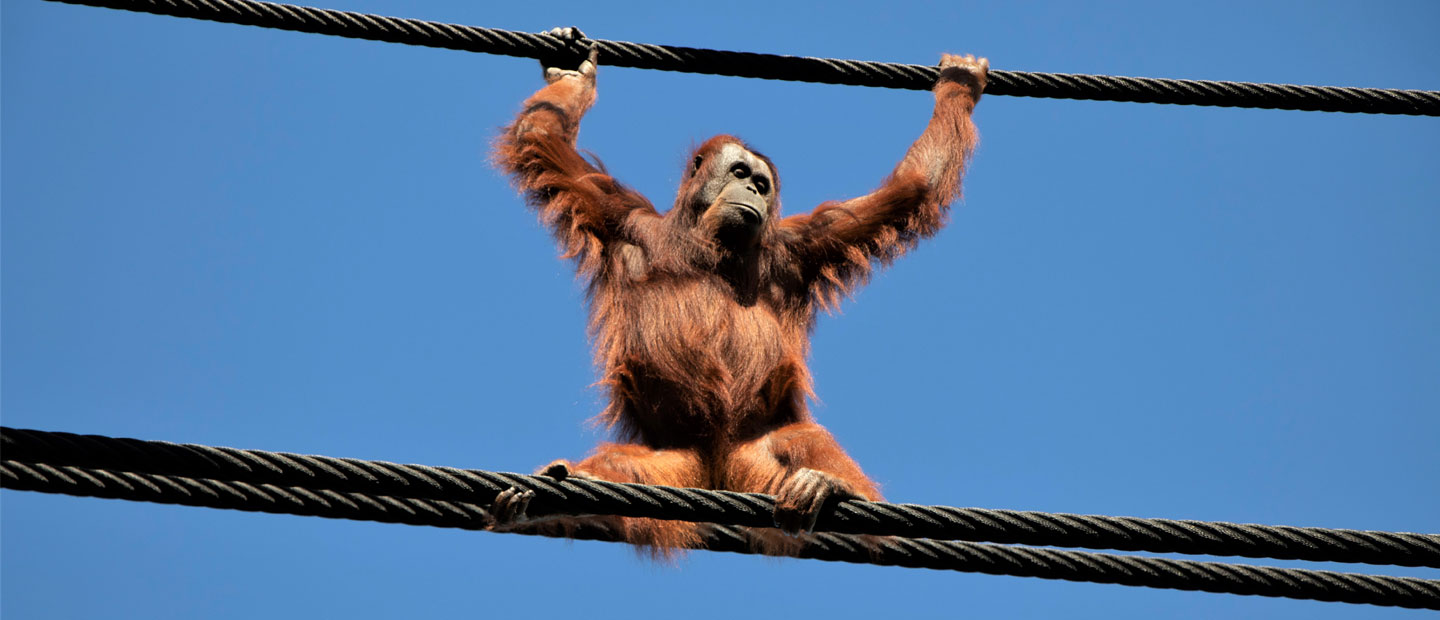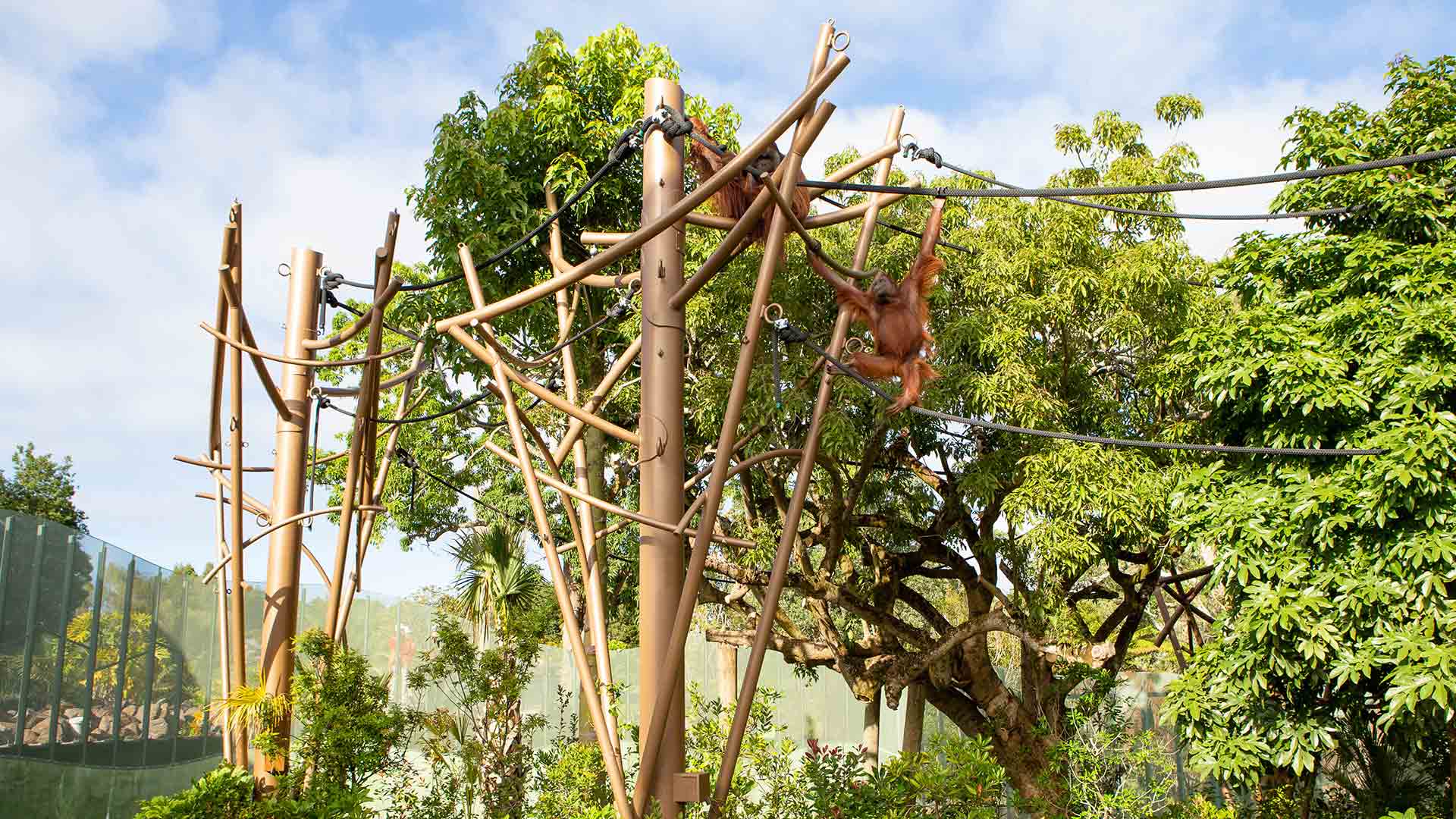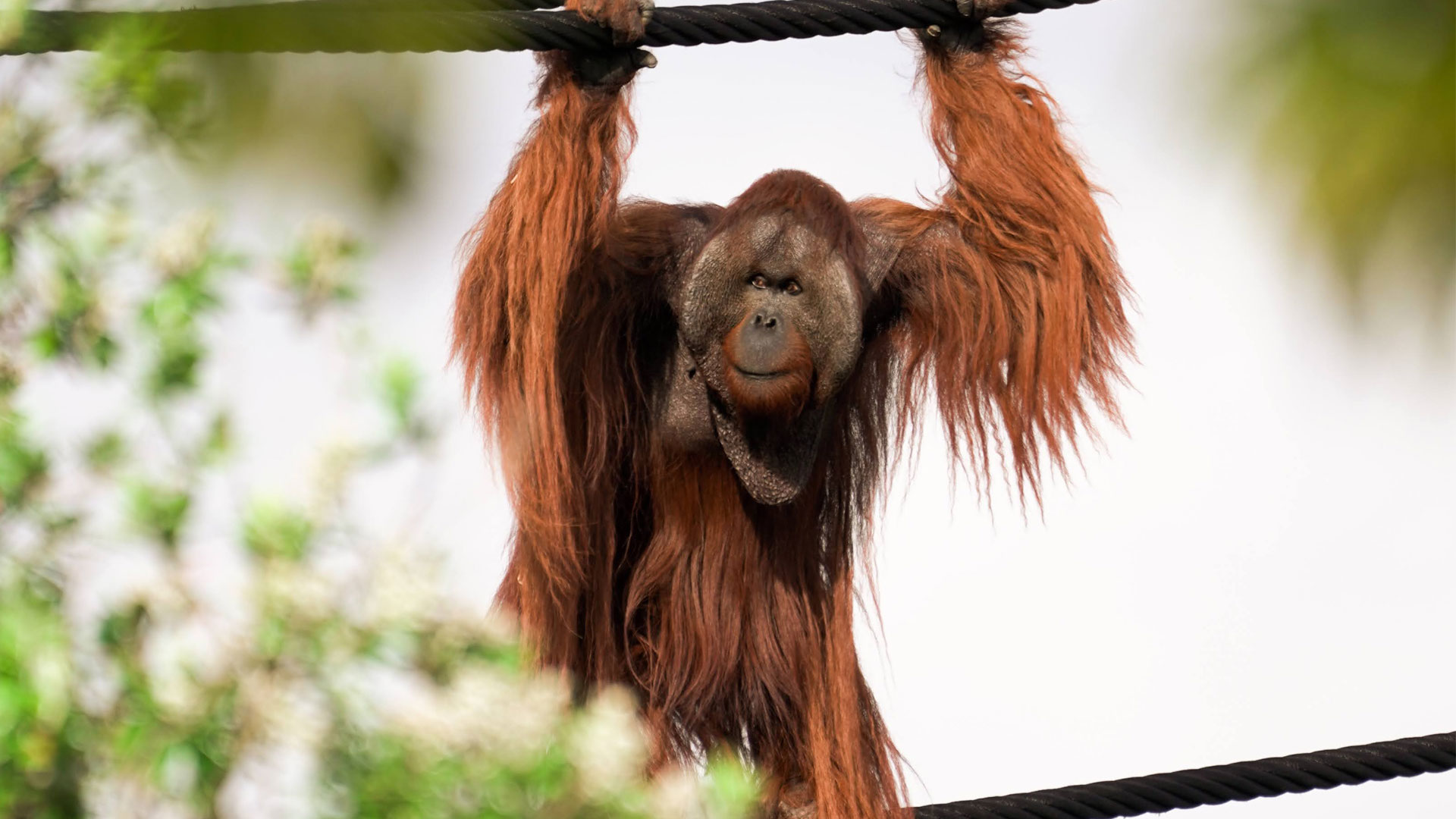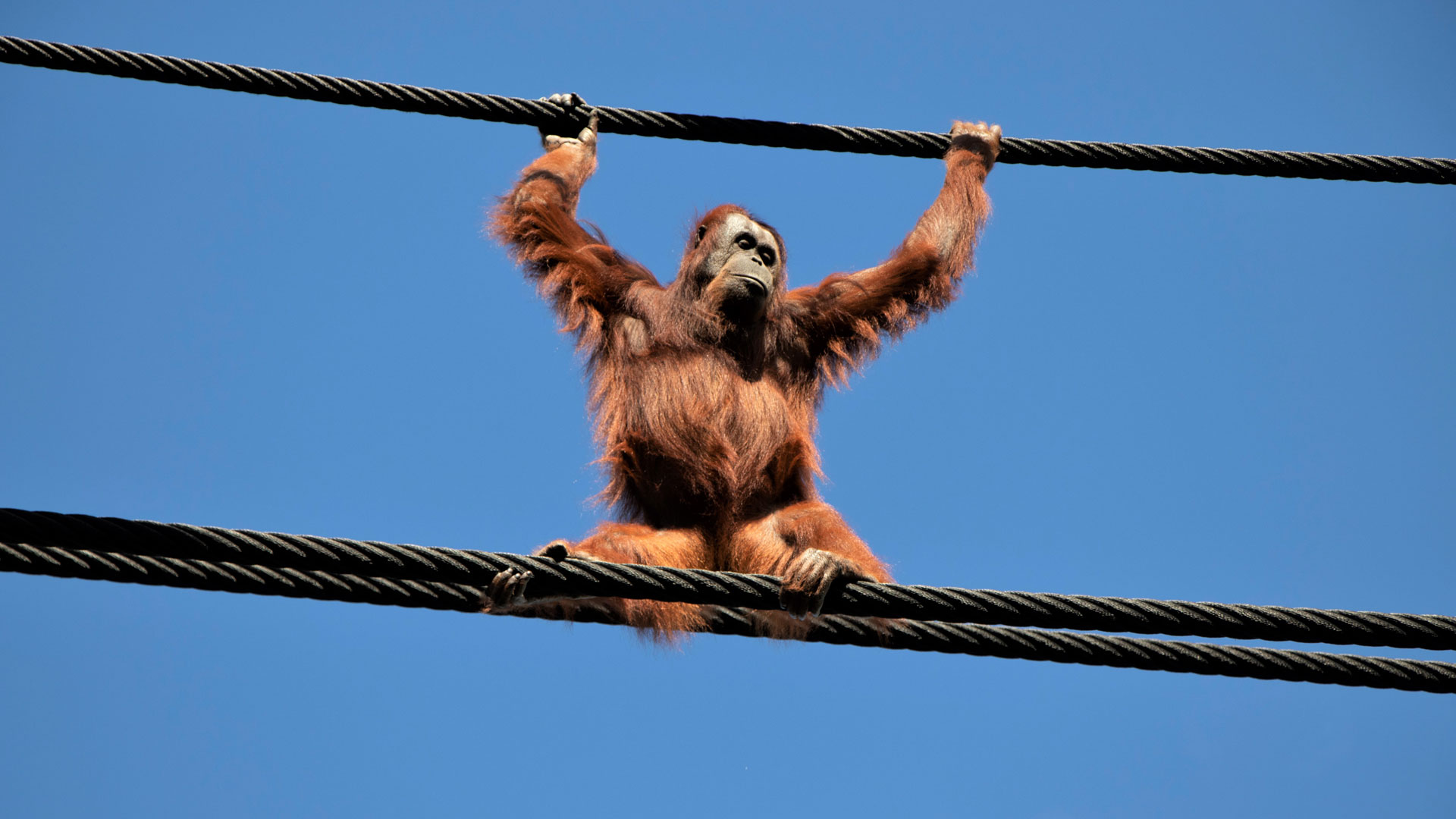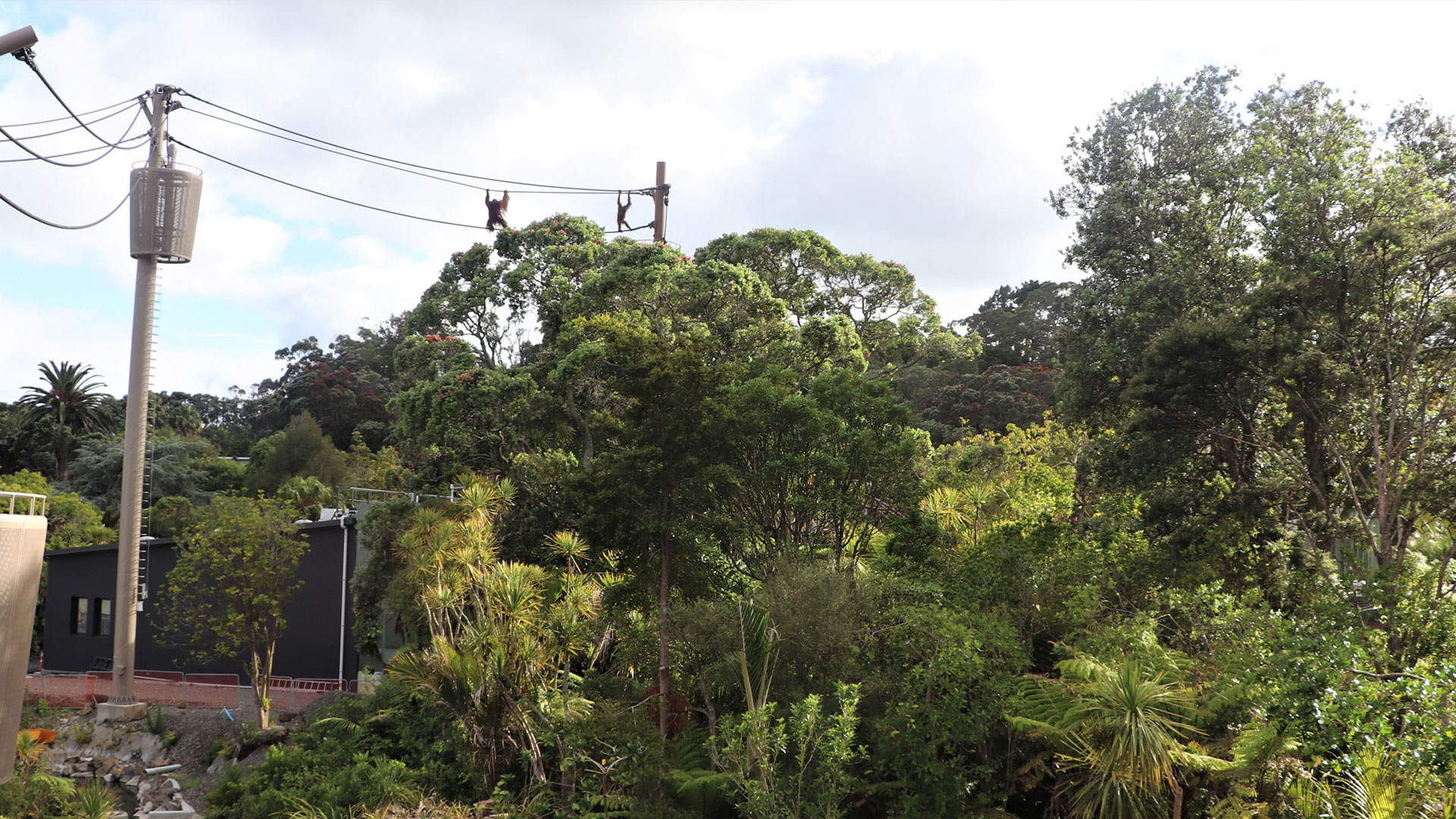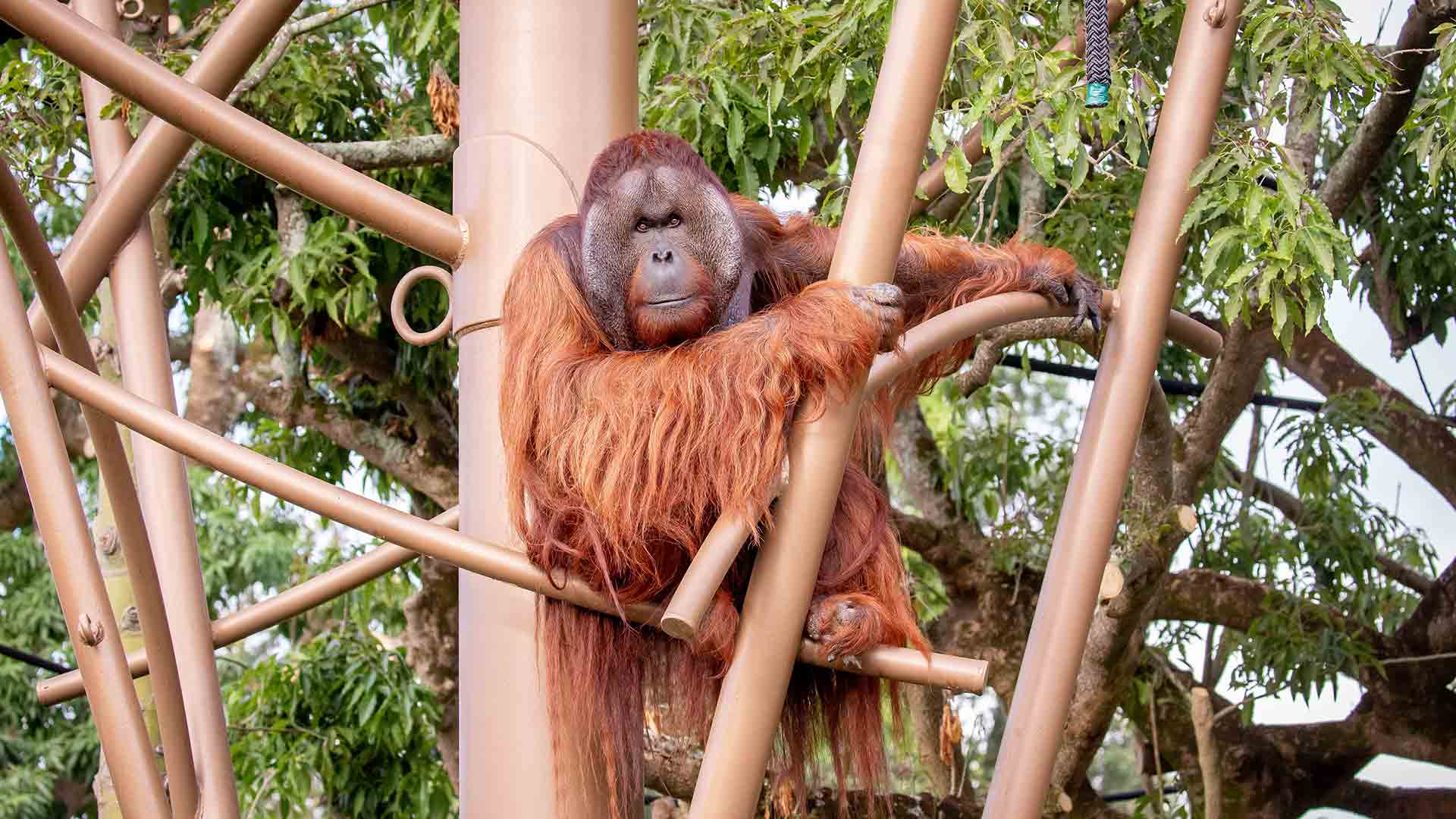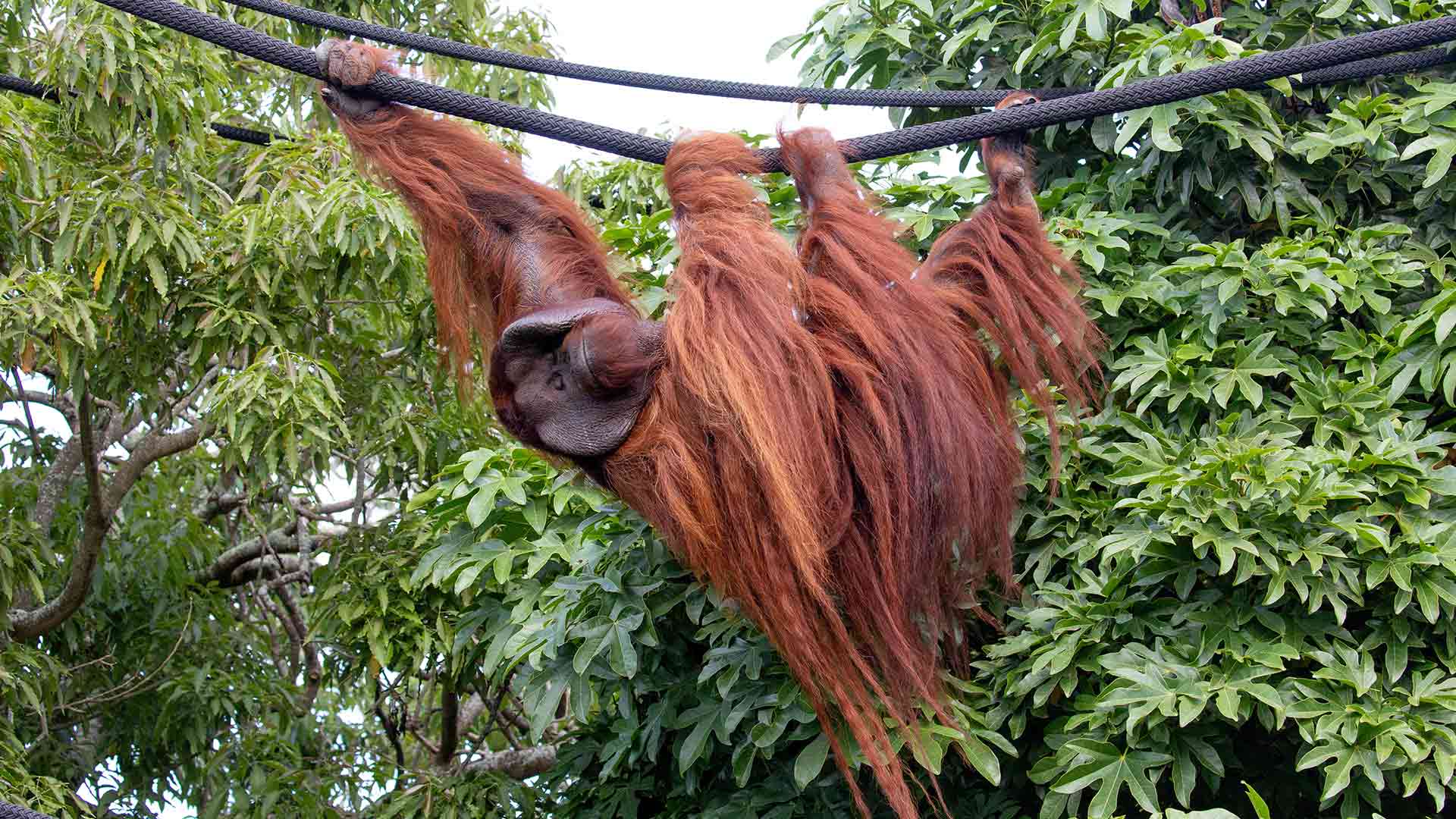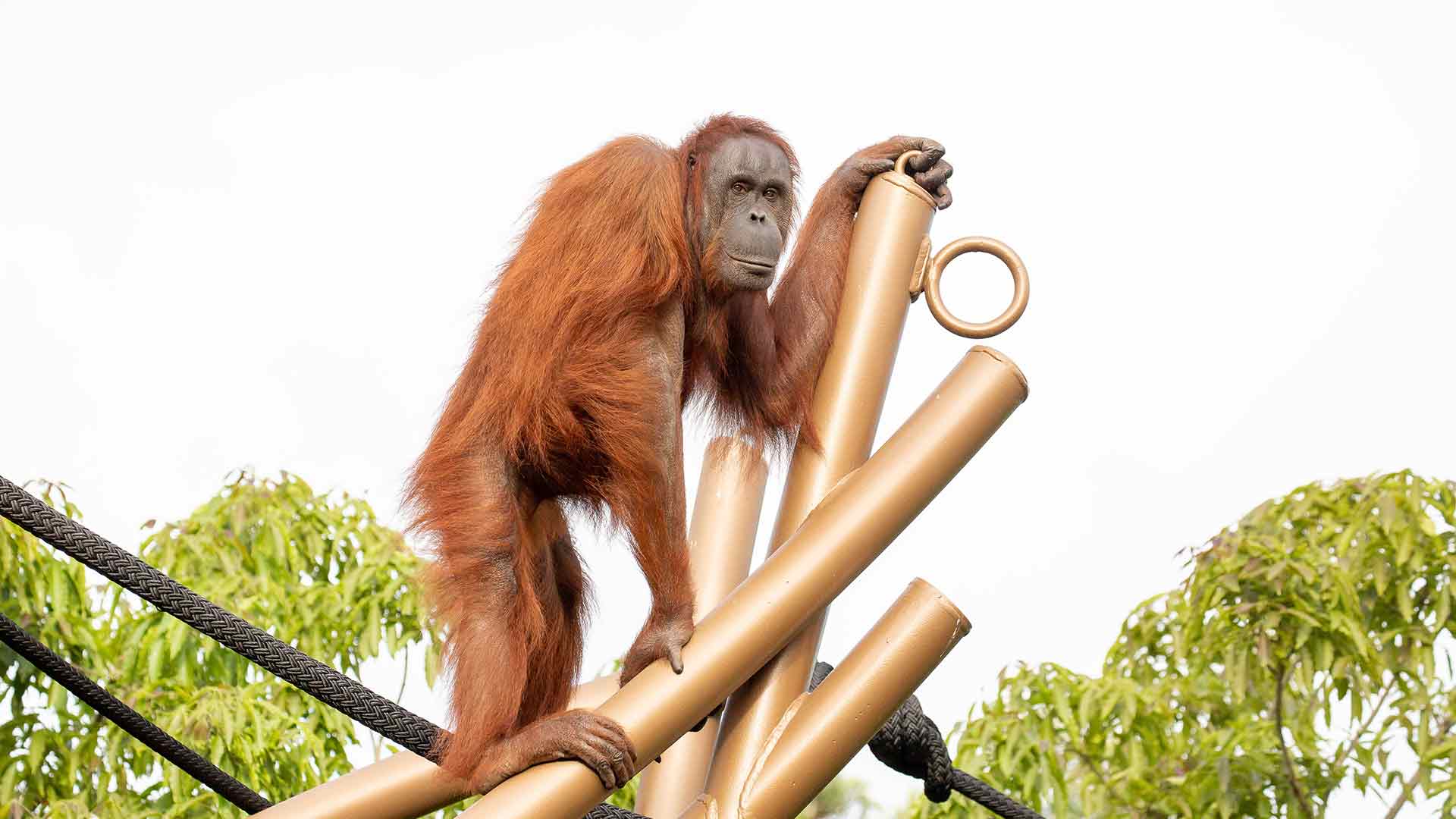Care, connection and conservation
This uniquely stimulating and dynamic environment that we’ve built for them is focused on ensuring that they can live out their amazing arboreal lifestyles as fully as possible. In doing so, we’ve also created a spectacular new opportunity and perspective for our visitors to experience and appreciate these primates,” says Kevin
For Auckland Zoo Primate team leader, Amy Robbins, who has worked with the Zoo’s orangutans for 20 years and with orangutans in the wild, the achievement of having the orangutans ranging across the aerial pathways is “an absolute dream come true”.
“Last week before opening when we first gave the orangutans the opportunity to explore these aerial pathways was without a doubt the best day of my entire career! It’s the culmination of what we’ve all been working towards for so many years. As keepers, we really appreciated being involved with the designers who valued our knowledge and experience. We spend our lives working with and observing these exceptionally intelligent animals’ movements and behaviour, and when it comes to a complex creation like these aerial pathways, the devil’s in the detail,” explains Amy.
“As we predicted, our very brave and confident female Melur was the first to go up, followed by Charlie and Wanita. It was incredible to see the natural instincts of all three so quickly kick in. We all felt so proud of them!
“In every way these aerial pathways, like the other features of their habitat, give them so many choices and enriching opportunities that enhance their physical health – including their immune systems and strength, and their psychological well-being. We’ve taken the best of all that we’ve seen internationally, and I believe what we have is the best habitat in a zoo for orangutans and siamangs anywhere in the world,” says Amy.


